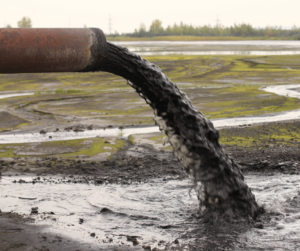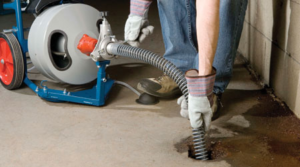Clogged drains and pipes may seem like minor concerns, but they play an important role in your home’s hygiene, functionality, and safety. There are many ways to keep your drains clean and functioning properly.
While plunging can break up some small clogs, most require professional help to remove them. Here are a few methods to consider for drain cleaning: hydrojetting, drain snakes, and chemical cleaners. Contact Drain Cleaning Aurora, CO now!
A clogged drain or sewer line can lead to a host of problems, from slow drainage and odors to sewage backflows that can threaten your health and your property. Fortunately, there are smart solutions that can help. One option is hydrojetting, which uses high-powered water jets to blast away blockages and prevent them from recurring. This eco-friendly method is also safe for your pipes and the environment.
The process starts with a full video inspection to locate the blockage and determine its cause. Then, the plumber deploys a hose that connects to a nozzle that can withstand high psi forces. The nozzle is aimed at the blockage, and the hose is pressurized from a specialized machine. The plumber sets the psi at around 1500 to 5000 psi, depending on the severity of the blockage.
Once the hoses are in place, the plumber activates the water jets. The concentrated stream of water scourles the inside of pipes, dissolving tough buildups and breaking apart tree roots. It also clears out any food particles that could provide a breeding ground for bacteria, which can cause odors in the house.
Hydro jetting is particularly effective at removing grease and other solids from drain lines. This is because the force of the water is so powerful that it can penetrate even the most stubborn clogs and break them up. In contrast, other drain cleaning tools, such as plumbing snakes and augers, usually just push the clog deeper into the pipes.
Another advantage of hydrojetting is that it can be used on older pipes without requiring any excavation. It is also much safer for the environment than chemical drain cleaners, which can contaminate groundwater and surface waters. It is important to hire a licensed plumber for this service, as the pressure can damage pipes if it is applied too frequently or at too low a level.
Hydro jetting is also ideal for removing tree root growth in sewer lines. This is because the specialized nozzle can target specific areas and avoid causing damage to other parts of the pipe. Using the water jets, the plumber can quickly remove the entire tree root without having to dig up the entire sewer pipe. This is especially useful for older buildings, as the accumulated roots can threaten their structural integrity.
Drain snaking
It’s possible to get clogs under control by using an at-home drain snake, also known as a plumbing snake or auger. These long, flexible tools feature a helix end with a crank handle that rotates to grab or break up clogs and mineral deposits. They are available at most hardware and home improvement stores. To use one, uncoil it and insert the helix end into the drain or pipe opening. If you can, start by removing the p-trap, a curved piping under sinks, as this will make it easier to snake the drain.
Once the helix has reached the blockage, turn the crank handle to slowly advance the snake. It may be necessary to remove the snake and reposition it if you encounter resistance. If the clog is denser or greasy, it may take several tries to break up and hook it. Once you are confident that the clog is gone, carefully retract the snake and test the drain with water.
To keep your pipes from becoming clogged in the future, regularly add a strainer or filter to any drains where food waste is disposed of. In addition, be careful with what you put down the drains – don’t send paper, hair, old medicine, or other solid debris down them. You can further protect your pipes by disassembling and cleaning the p-traps under sinks once a year, as well as adding a rubber drain cover to prevent odors.
Before you tackle a drain clog, be sure to read the manufacturer’s instructions for your plumbing snake. It’s important to follow specific safety measures, as a plumbing snake can damage or break pipes if used incorrectly. Be sure to wear protective gloves and safety goggles, and always operate the device with a second person for support. It’s also a good idea to have a bucket nearby to catch any debris or water that might spill. And remember, if you can’t clear a clog using your snake, calling in a professional is always a wise choice. They have the right tools and experience to ensure that your clog is fixed quickly and without damaging your pipes.
Chemical drain cleaners
Chemical drain cleaners are what most people think of when they hear the term “drain cleaner.” They come in liquid, gel or powder form and are sold at hardware stores and home improvement centers. They work by chemically breaking down or oxidizing organic material that builds up in drains and pipes over time. They typically require that you pour them down the drain as close as possible to the clog. They also typically produce fumes that can irritate the skin, eyes and inner lining of the respiratory tract.
There are four types of chemical drain cleaners: acid, caustic, oxidizing and enzymatic. Each type works through a different chemical reaction with the material in the clog to break it down and dislodge it. Acidic cleaners, which include sulfuric and hydrochloric acid, break down the clog by attacking its molecules and generating heat. They’re effective against hair, grease and paper. Caustic cleaners, which are made of lye or sodium hydroxide, generate the same effect through chemical reactions and work well on grease and soap build-up. Oxidizing cleaners, which contain bleach, peroxides or nitrates, release oxygen that breaks down organic material and works well on food-based clogs. Enzymatic cleaners use a combination of bacterial cultures and enzyme preparations that metabolize and dissolve blockages. They’re slower than acid, caustic and oxidizing cleaners but are effective against most organic materials.
All chemical drain cleaners have the potential to damage PVC, galvanized steel and copper pipes and are particularly dangerous for septic systems. They can also be harmful to your health, causing chemical burns to the skin, eyes and respiratory tract. They also produce fumes that can irritate these sensitive areas and are particularly hazardous to children and pets who may come into contact with them.
The best way to avoid using chemical drain cleaners is to perform regular maintenance on your plumbing system. Clean drains regularly to prevent clogs from forming. You can also try using a drain snake or hydrojetting to clear larger clogs. If you do have a serious clog, call a plumber for professional help.
DIY solutions
A clogged drain is an annoying, often time urgent, problem that can be resolved with some basic tools. However, before you resort to chemical cleaners that are expensive and harmful to your plumbing system, try one of these easy do-it-yourself solutions.
Boiling Water
This simple solution can melt a small amount of greasy blockages or dissolve soap scum. Pour a pot of boiling water down the drain and repeat as needed until the clog is resolved.
Baking Soda and Vinegar
A popular DIY method, this technique involves pouring a cup of baking soda down the drain followed by a cup of vinegar. This mixture should sit for up to an hour, after which you can flush the drain with a pot of hot water. This is an effective solution for most clogs, but it may not work on tougher ones.
Detergent and Hot Water
If you can’t find any of the above methods, you can always use a plunger. A rubber plunger is a quick and inexpensive tool that can help break up clogs and debris. The plunger can also dislodge hair if it is caught in the drain. Make sure to clean your drains regularly using this method and avoid non-flushable items such as sanitary napkins, baby wipes, and paper towels.
Salt, Borax and Vinegar
Almost every household has salt and vinegar, but if you don’t have any, you can purchase these two ingredients at a local store for cheap. The combination of these three ingredients is effective in unclogging most clogs. To use this homemade drain cleaner, simply pour 1/4 cup of salt, 1/4 cup of borax and 1/4 cup of vinegar down the drain. Let this mixture sit for an hour, then pour in a pot of boiling hot water to wash away the loosened debris.
Homemade drain cleaning solutions are safe for your pipes, less expensive than commercial chemical cleaners, and can help keep your drains smelling fresh. In addition, they can help prevent clogs and keep your drains running smoothly. But if you’re experiencing persistent problems, it’s best to call a professional for a more permanent solution.


